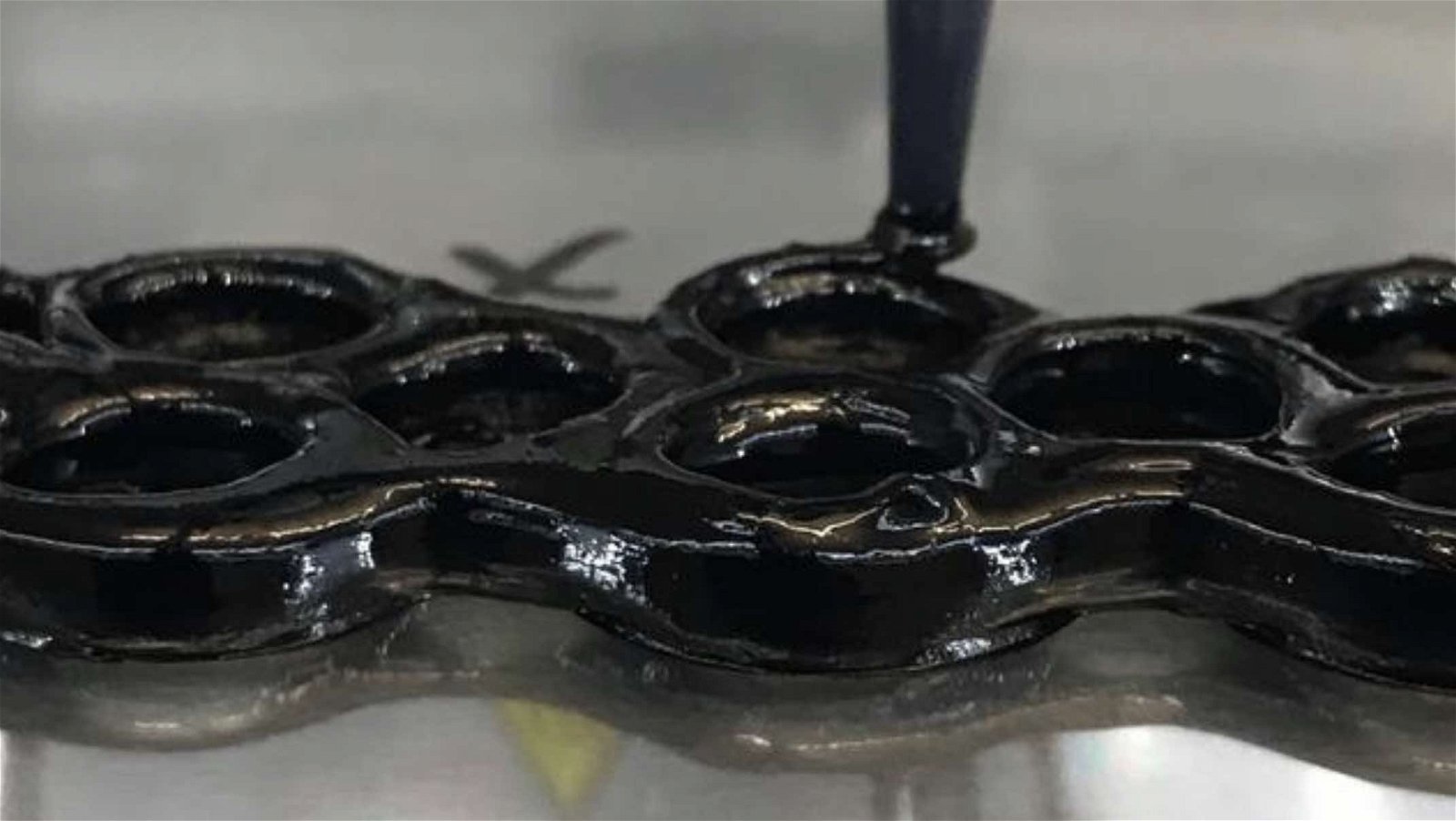A team of engineers has invented a remarkable new material that gets stronger after an impact. The material’s creators also say it is electrically conductive, making it an ideal candidate for wearables or other electronics that are subject to repeated stresses and impacts.
Rather surprisingly, the inventors of their new material say the unique properties of corn starch, a common food additive, inspired their efforts.
“When I stir cornstarch and water slowly, the spoon moves easily,” explains Yue (Jessica) Wang, a materials scientist and the project’s principal investigator. “But if I lift the spoon out and then stab the mixture, the spoon doesn’t go back in. It’s like stabbing a hard surface.”
Scientists call this variable state adaptive durability, meaning the strength of the material shifts from a generally malleable state to a more durable one after a type of force is applied. Since many electronic devices such as mobile phones, tablet PCs, and electronic-based wearables could benefit from this type of durability, the researchers behind this latest invention wanted to see if they could imbue a relatively stretchable, malleable with this property. If successful, the resulting material could form the basis for electronic devices that don’t break like a dropped phone but instead actually become stronger through repeated use.
Unfortunately, most metals and other materials with high electronic conductivity are hard and brittle, presenting the developers of this seemingly ‘magical’ material with a formidable barrier. However, recent advances in material sciences have resulted in a class of materials called conjugated polymers that are both stretchy and conduct electricity. Still, these types of polymers, which ae composed of tiny, spaghetti-like molecules, tend to break apart under repeated stresses.
These circumstances motivated Professor Wang and her University of California, Merced engineering team to see if they could find a combination of conjugated polymers that were not only durable but became more sturdy with repeated uses.
First, the researchers combined a solution of four polymers. According to the release announcing the new material, this “poly (2-acrylamido-2-methylpropanesulfonic acid), shorter polyaniline molecules and a highly conductive combination known as poly (3,4-ethylenedioxythiophene) polystyrene sulfonate (PEDOT:PSS). After mixing them, Wang’s team spread the mixture out into a thin film and let it dry.
As expected, the resulting material was stretchy and electrically conductive. However, the real question was how the material would react to hitting it with a hammer. If it reacted like other conjugated polymers, it would weaken and break apart, leaving the researchers back where they started. However, when they tested their material, they found something else altogether.
“Rather than breaking apart from very rapid impacts, it deformed or stretched out,” they explain. “The faster the impact, the more stretchy and tough the film became.” Just like the cornstarch solution, the added force of the impacts resulted in adaptive durability, making a stronger, more durable material than the team started with.
According to the research team, the magic ingredient in their magical material was the addition of the PEDOT:PSS combination, which they say “improved both the material’s conductivity and adaptive durability.” This was somewhat of a surprise, said Wang, since PEDOT and PSS usually don’t get tougher with rapid impacts.
To explain this unexpected result, the magical material inventors say they believe the secret lies in the composition of the selected polymers coming together to create a “spaghetti and meatballs” type mixture that imbues the resulting composite material with this extraordinary property.
“The four polymers, two with positive charges and two with negative charges tangle up like a big bowl of spaghetti and meatballs,” explained Di Wu, a postdoctoral researcher in Wang’s lab who is presenting the work at the meeting. “Because the positively charged molecules don’t like water, they aggregate into meatball-like microstructures.”
If correct, this means that the “meatballs” absorb the energy of the impact and flatten out but don’t break apart. The result is a material that conducts electricity but also gets stronger and more durable after repeated applications of force.
Still, Wang believed that they could improve on their initial design by including various additives in their material to improve its adaptive durability properties. After some trial and error, they found that the addition of positively charged nanoparticles called 1,3-propane diamine weakened the interaction of the material’s “meatballs” to increase stretchability while also strengthening the “spaghetti strings,” making it more durable with each strike.
“Adding the positively charged molecules to our material made it even stronger at higher stretch rates,” says Wu.
In the future, Wang says they plan to continue to adjust their material to increase and decrease the relative properties for customized applications. These include things like backside sensors for smartwatches or even health-related sensors like continuous glucose monitors and cardiovascular sensors.
“There are a number of potential applications, and we’re excited to see where this new, unconventional property will take us,” said Wang.
Christopher Plain is a Science Fiction and Fantasy novelist and Head Science Writer at The Debrief. Follow and connect with him on X, learn about his books at plainfiction.com, or email him directly at christopher@thedebrief.org.

